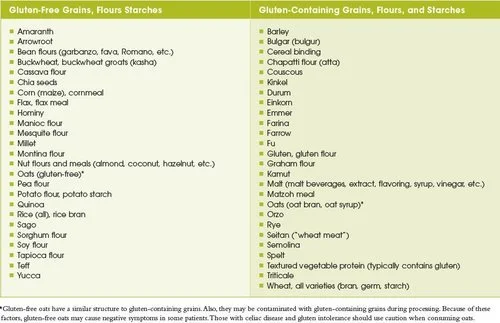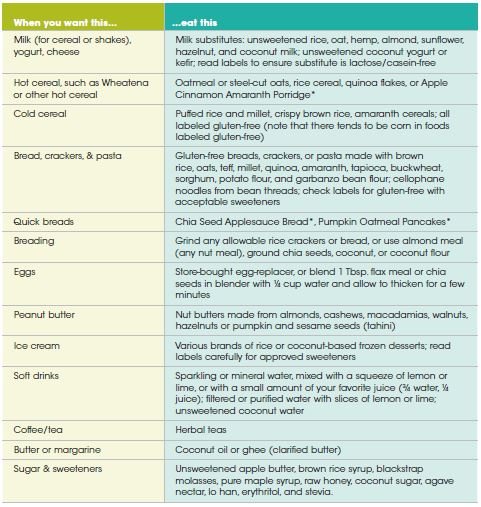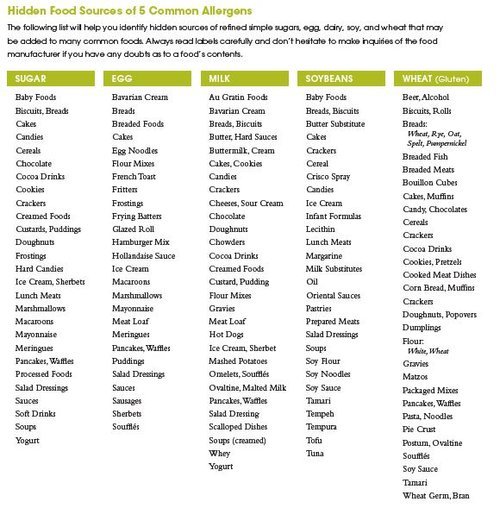The Elimination Diet
I’m calling this blog post ‘The Elimination Diet’, but really there are many diets out there that eliminate one thing or another. I’m referring to the elimination diet constructed by the Institute of Functional Medicine.
Specific foods or commonly eaten foods could be causing a whole host of health conditions, including digestive problems, headaches, low energy, depression, mood swings, eczema, joint aches, asthma, weight gain, and many more. Perhaps you’ve had one or more of these symptoms for years, but haven’t considered the fact that certain foods that you’re habitually consuming could be the cause.
The elimination diet, as the name implies, is based around removing common foods that people tend to be sensitive to. Unfortunately, these foods are usually things we most often consume, such as wheat, dairy, eggs, nuts etc, so the elimination diet can be quite challenging.
It’s all about gathering data about YOU, and your body, which is far more relevant than reading popular books that discuss population-wide generalisations. What’s more, your own experience supersedes any test.
If you are suffering from several seemingly unconnected symptoms, such as low energy levels, frequent headaches depression etc., and your symptoms have been going on for as long as you can remember, perhaps an elimination diet is worth the effort.
Many people who manage to strictly follow the diet for a period of 3 weeks report feeling improvements in many symptoms, such as increased energy and mental alertness, fewer headaches, less muscle or joint pain, fewer and milder GI symptoms, and a general sense of improved well-being. These people often say they didn’t realise how bad they were feeling until they experienced what it was like to feel healthy and revitalised again. Gone are all the symptoms that had been plaguing them for years on end. People feel so good after this diet that they actually continue on it indefinitely!
How does it work?
1. It reduces inflammation
I’m not talking about the necessary type of inflammation that repairs damaged tissues. If you’ve turned an ankle and it becomes red and swollen, that’s inflammation doing its job, and it’s serving a purpose.
What doesn’t serve any beneficial purpose in what is known as ‘chronic low-grade inflammation’. This type of inflammation is ongoing and unrelenting because it’s constantly reacting to what it considers a threat to your body. Chronic inflammation is a result of ‘leaky gut’. Large, undigested food particles squeeze through the gaps in the gut wall (aka intestinal barrier) and cause an immune reaction.
This will happen indefinitely unless the gut wall is given a chance to heal itself, so it can properly digest the food you’re eating, and prevent foreign compounds from leaking through. That’s where the elimination diet comes in. By removing the common triggers that irritate the gut wall, it allows time for it to repair itself, and serve its proper function.
The importance of this healing process cannot be overstated. If chronic inflammation is allowed to continue, not only will your current symptoms persist, but the immune system will become so overburdened and reactive, that it will start attacking your own body tissues. This results in autoimmune diseases. Those large undigested food particles tend to be proteins, and these proteins can look very similar to proteins that make up your body tissues, such as the thyroid gland. If the immune system confuses the food protein gluten for the thyroid, it will attack both, and damage to the thyroid gland can result in Hashimoto’s.
2. It supports a healthy microbiome
A healthy population of gut microbes, or gut flora is essential for health. There are good guys (beneficial bacteria) and bad guys (pathogenic bacteria), and also microbes that are just looking for an opportunity to dominate (opportunistic bacteria). It’s not possible to get rid of all the bad guys that live inside our gut. What we have to do is make sure they are outnumbered by the good guys, who can keep them in check. Beneficial bacteria provide so many health benefits that directly impact us, it’s hard to know where to start. For one thing, if we have a healthy microbiome that is populated with beneficial bacteria such as Lactobacillus and Bifidobacteria, the chronic, low grade inflammation, and all its downstream consequences discussed above - all that stuff doesn’t happen. The reason is because beneficial bacteria protect the gut wall, and they communicate with the immune cells to create an environment of tolerance and understanding, so the immune system doesn’t overreact to everything ‘foreign’ that it sees. Beneficial bacteria will make sure the cells that make up the gut wall are tightly knitted together, so large protein fragments cannot squeeze through.
Because the elimination diet is based around eating healthy whole foods, and eliminating refined and processed sugary foods, this will ensure that the beneficial bacteria are getting the food they need to thrive, while the pathogenic bacteria, and yeasts, which tend to like sugar, are going hungry, so they gradually die off. You have to imagine these microbes only live for a few days, so there is a very fast turnaround going on all the time. That is why our diet can have such a profound impact on the composition of our microbiome in such a short amount of time. This is obviously a double edged sword. While eating healthily for a few days can increase our beneficial flora, eating and drinking junk foods can have the opposite effect.
3. It provides phytonutrients to heal the gut
The word phytonutrients basically translates as ‘plant-based nutrients’.
Phytonutrients are what give vegetables their amazing variety of bright colours. They are packed full of antioxidants, so they can prevent damage to cells and help reduce inflammation. They can also aid in detoxification and help reduce our response to stressful situations.
You’ll want to eat plenty of brightly coloured vegetables on this diet. If you’re not really a veggie-lover, consider this: the food you like or dislike is dictated to you by your microbiome. Yes, you heard that right! It is your gut microbes that send messages to your brain to induce cravings for the type of food that they want. So if you have been eating a lot of sugar, chances are you’ll have many types of yeasts living in your gut, because they love sugar. These guys will keep sending messages to your brain to continue eating sugar. On the other hand, reducing sugar intake will reduce the dominance of yeast in your gut, which in turn will reduce cravings for sugar. Replacing sugary foods with whole foods, such as brightly coloured veggies will improve the numbers of beneficial bacteria, and they will send signals to continue eating the food that helps them thrive. So, initially, if you’re not finding the veggies enjoyable, try to persist, and over the course of the diet (3-4 weeks) you might see a positive change in how you approach a whole-food diet. It doesn’t need to be boring, or bland or restrictive. There are plenty of ways to make it nutritious and tasty. I will provide some recipes on this site that conform to the elimination diet protocol.
4. It reduces toxic burden
Again, by adopting a diet that promotes whole food, and reducing the amount of processed and packaged food available means that, you probably won’t be consuming as many additives and preservatives, artificial flavours and colouring as you might usually be. It is better, of course, if you can try and get organic fruit and vegetables, but this can be expensive. The environmental working group (www.EWG.org) periodically release a list of ‘dirty’ foods, and those foods should ideally be bought as organic, to reduce the intake of pesticides, herbicides and insecticides while you’re on this diet. Don’t get too caught up in all this though; eating any vegetable is better than not eating it because you can’t access the organic version. This diet has a lot of detoxifying nutrients and phytonutrients that will help your body eliminate toxic substances. Reducing toxic load relies upon many different nutrients, and a deficiency in any one of them can result in a build up of toxins. When the gut wall is damaged, this affects the proper absorption of nutrients. Increasing the intake of high-fiber foods can help eliminate these toxins.
At first it can seem very restricting because it will involve giving up a lot of the food and drink you are so used to consuming. Without a doubt, starting the diet is the hardest part. I can help support you!!
So what can you eat?
I touched above on the importance of whole food, such as meat, vegetables, fruit, nuts and seeds. There is no restriction on these foods. The parts most people find restrictive are cutting out dairy and cutting out wheat, which contains gluten.
Lets look at the problem of cutting out dairy first, and see if there are workarounds that might be appealing to you.
Dairy alternatives
Nowadays, dairy alternatives are everywhere. The hard part is choosing which alternative you like best! Milks made from nuts, such as almond, flaxseed, hazelnut, or coconut can be found in most supermarkets. They tend to be more expensive than regular milk. Often these milks contain added sugars, so be careful to select the unsweetened version (which also tends to be cheaper).
Also, since butter is not an option, you can try using ghee. Ghee (sometimes called clarified butter) is technically dairy-based, but since all the milk proteins have been removed it’s fine to eat on this diet. Ghee is actually a great source of butyric acid, a short-chain fatty acid with amazing benefits for gut health and gut-immune communication.
Gluten-free grains
This is a tricky one for most people, since it excludes breads, cereals, crackers and pastas that contain gluten. However, there are still plenty of gluten-free whole grains that are allowed on the diet, and these provide a good source of fibre.
Oats are strictly speaking gluten-free, but there are issues with cross-contamination with gluten-containing products, so if you’re thinking of eating oats on the diet, do so with caution and perhaps with oats that are certified gluten-free. Amaranth can be used in place of oats if you want to play it safe. They take slightly longer to cook, but you can pre-soak them overnight to shorten the cooking time.
Here is the IFM list of both gluten-containing and gluten-free grains. Gluten is also commonly found in prepared sauces, dressings, seasonings, and many other foods, so check out the hidden foods list too.
It’s important to consider these four questions, both before, during, and after doing an elimination diet:
What are my symptoms?
When do they happen?
When do they get worse?
When do they get better?
Closely monitoring how you feel will help you measure your progress and keep you motivated to stay on the diet.
Finally, it’s really important to have the support of a nutritionist or coach when undertaking this diet.
I provide my patients with clear written explanations of how to go about the diet. I usually spend 30-45 minutes giving an initial overview and ‘how-to’, and this is followed by a 1 week check up to see how you’re doing.
It is not uncommon to have some uncomfortable reactions to the diet initially, which I can specifically help with and why I am here to help guide you through it.
Six of the most common reactions are:
Fever, chills, headaches
Withdrawal
Constipation/diarrhoea/abdominal cramping
Low blood sugar (Hypoglycemia)
Withdrawals from coffee
Craving sugar
After 3-4 weeks, you will start reintroducing foods one by one to see if you experience a reaction. This part of the protocol really requires careful planning and guidance on when and which foods to re-introduce.
So don’t continue to suffer unnecessarily. There’s amazing evidence behind this protocol, and what’s more, it’s FREE as it’s just food. Yes, it’s hard. But it’s hard living with chronic fatigue, and constant GI issues.
If you want to work with me and get on the path back to optimal wellness, please feel free to schedule an appointment with me and i’ll be happy to resolve your health issues.
Kind regards,
Brady











